
Symbolism: the essence of the term, history in painting, distinctive features, famous symbolists
Symbolism is a style and direction in visual art in which the artist uses hidden messages, allegories, and even codes with deep philosophical or mystical meaning when creating a painting. Mysterious symbols in works of art embody the connection between the real and otherworldly realms. They compel the viewer to think actively, abandon simplified interpretations of the plot, and discover the true essence of the artist's intention. Symbolism has had a significant impact on world art and served as a precursor to many new directions in 20th-century painting.
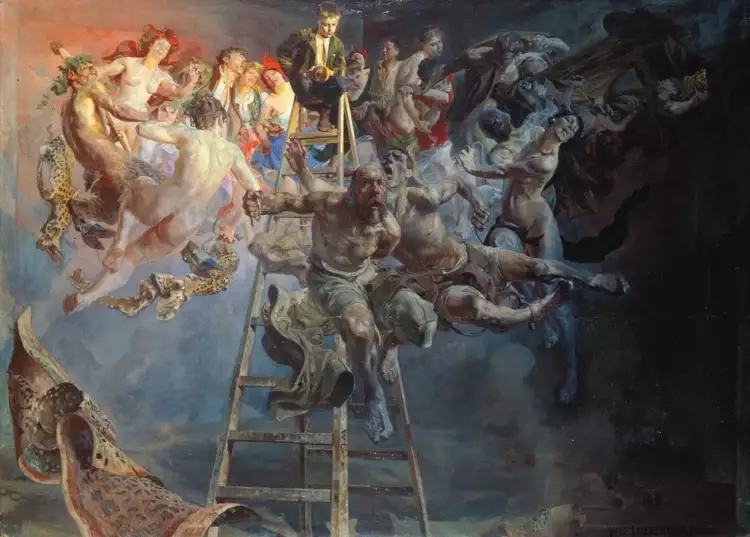 Symbolism. Jacek Malczewski. Vicious Circle, 1895-1897
Symbolism. Jacek Malczewski. Vicious Circle, 1895-1897
The History of Symbolism
Symbolism has very deep historical roots. Masters used mysterious symbols in visual art even in Ancient Egypt and Babylon when decorating monumental structures, later in the era of Antiquity.
Symbolism also manifested itself prominently in Christianity. On ancient icons with the likenesses of saints, the intentions of their creators to convey a profound spiritual meaning through obvious symbols such as halos, doves, chalices, sacred books, keys to heaven, crosses, or palm branches are clearly visible.
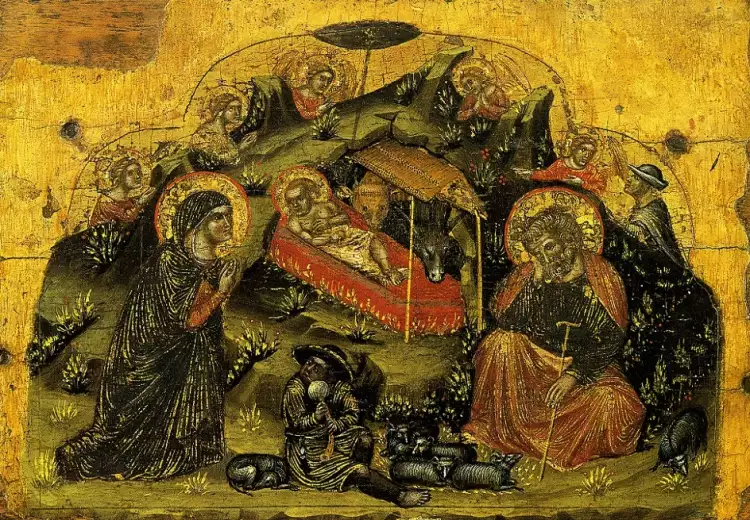 Symbolism. Ancient Byzantine icon
Symbolism. Ancient Byzantine icon
During the Renaissance, many artists showed an interest in symbolism. Masters of that time often filled their paintings with mysterious symbols related to religious and mythological themes. However, particular respect among symbolists was earned by the great Dutch painter Hieronymus Bosch. His brilliant triptychs with allegorical figures and numerous whimsical symbols significantly differed from the style of his contemporaries. The symbolism of Bosch's paintings cannot be interpreted unambiguously even today. Endless debates among art historians from different countries continue on this topic.
 Symbolism. Fernand Khnopff. Caress of the Sphinx, 1896
Symbolism. Fernand Khnopff. Caress of the Sphinx, 1896
Masters of the Golden Age of Dutch painting also contributed to the development of symbolism. During this period, a popular subgenre of still life called "Vanitas" emerged. Easily recognizable symbols of the transience of life, such as skulls, musical instruments, extinguished candles, and withered flowers, were present in the works of Dutch painters. Examples of such works can be found in paintings by David Bailly, Harmen van Steenwyck, and Jan Davidsz de Heem.
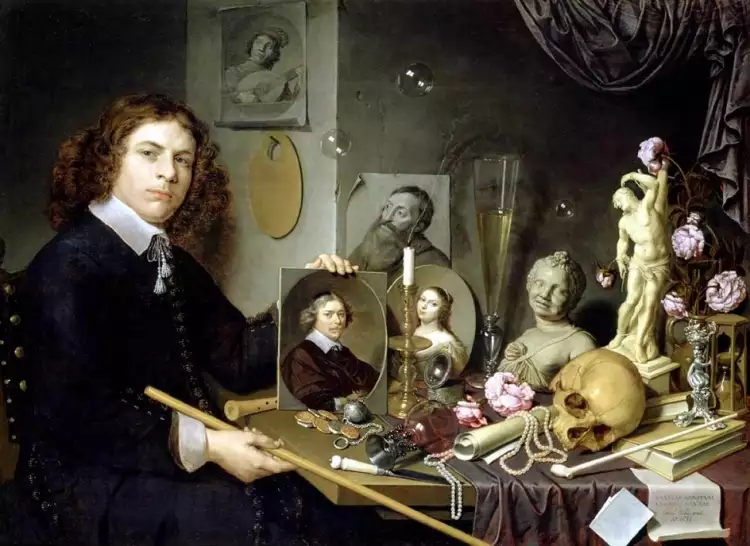 Symbolism. David Bailly. Self-Portrait with Vanitas Symbols, circa 1651
Symbolism. David Bailly. Self-Portrait with Vanitas Symbols, circa 1651
In the 18th and 19th centuries, the characteristics of symbolism can be observed in the works of many landscape painters. The paintings of the German artist Caspar David Friedrich, in particular, are imbued with special spiritual depth. The symbolism in his canvases is straightforward and comprehensible, following the best traditions of European Romanticism.
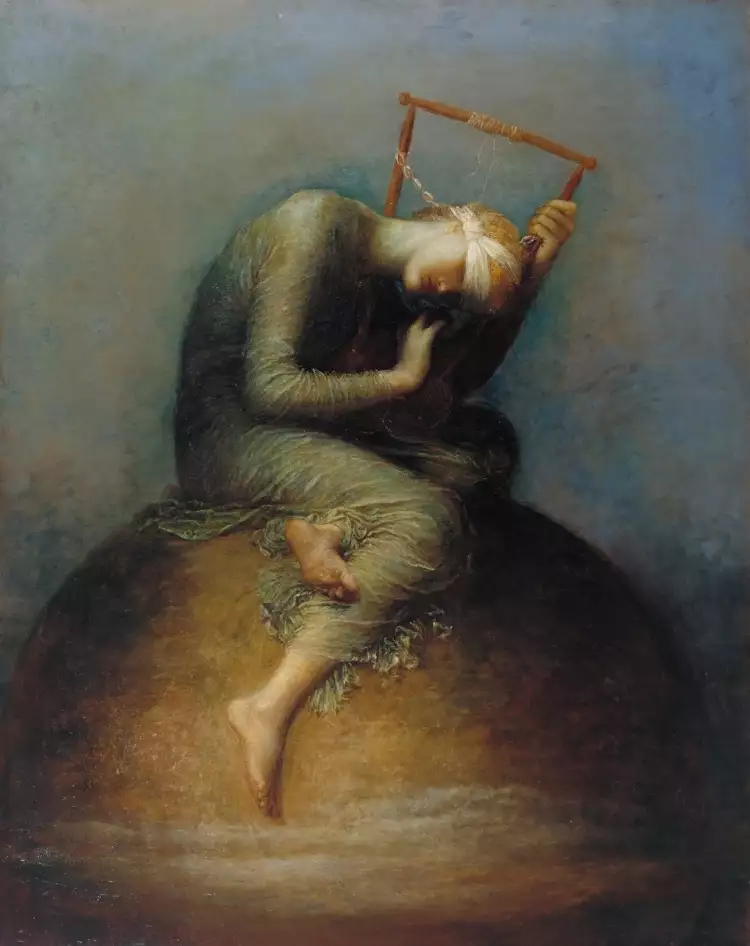 Symbolism. George Frederic Watts. Hope, 1886
Symbolism. George Frederic Watts. Hope, 1886
It was Romanticism that served as the cradle for the formation of Symbolism as a distinct movement in art. Both movements shared a common aspiration to seek a higher spiritual essence. However, while the Romantics saw the greatest mystery of life in understanding one's own inner world, the Symbolists sought it in absolute Being. The latter used various symbols in their paintings to unite the Worlds of things and ideas, employing hints, allusions, mystical, and esoteric signs.
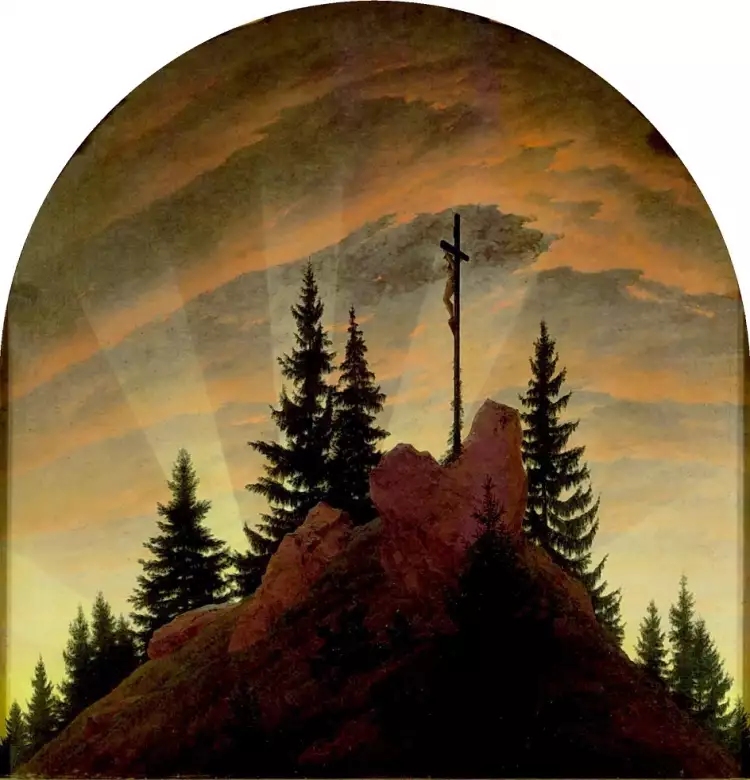 Symbolism. Caspar David Friedrich. Cross in the Mountains (Tetschen Altar), 1808
Symbolism. Caspar David Friedrich. Cross in the Mountains (Tetschen Altar), 1808
The credit for introducing the term "Symbolism" to the wider public goes to the French poet Jean Moréas. In his 1886 manifesto, he first used this word to denote a new direction in art.
Symbolism manifests itself in various ways in works of art:
- The quest for a new artistic language to express complex symbolic meanings.
- The presence of decadent moods in the narrative.
- Adoration of unattainable ideals.
- The cult of beauty and mystery.
- Rejection of bourgeois reality.
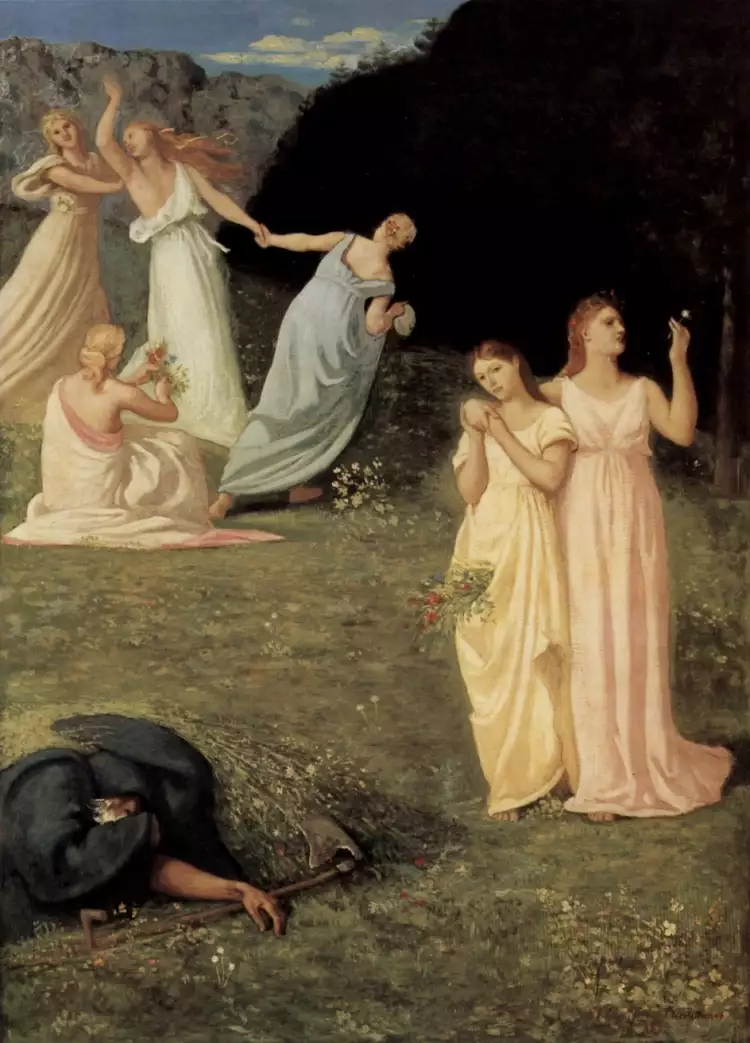 Symbolism. Pierre Puvis de Chavannes. Death and young girls, 1872
Symbolism. Pierre Puvis de Chavannes. Death and young girls, 1872
In the visual arts, symbols can take many forms. For example:
- The number 7 represents completeness (seven days of the week, seven deadly sins, seven colors of the rainbow).
- An olive branch symbolizes peace.
- An owl stands for wisdom, sleep, or death.
- An infant represents a pure soul.
- A chalice signifies Christ's redemptive sacrifice.
- A skull symbolizes the proximity of death.
- An hourglass represents the transience of existence.
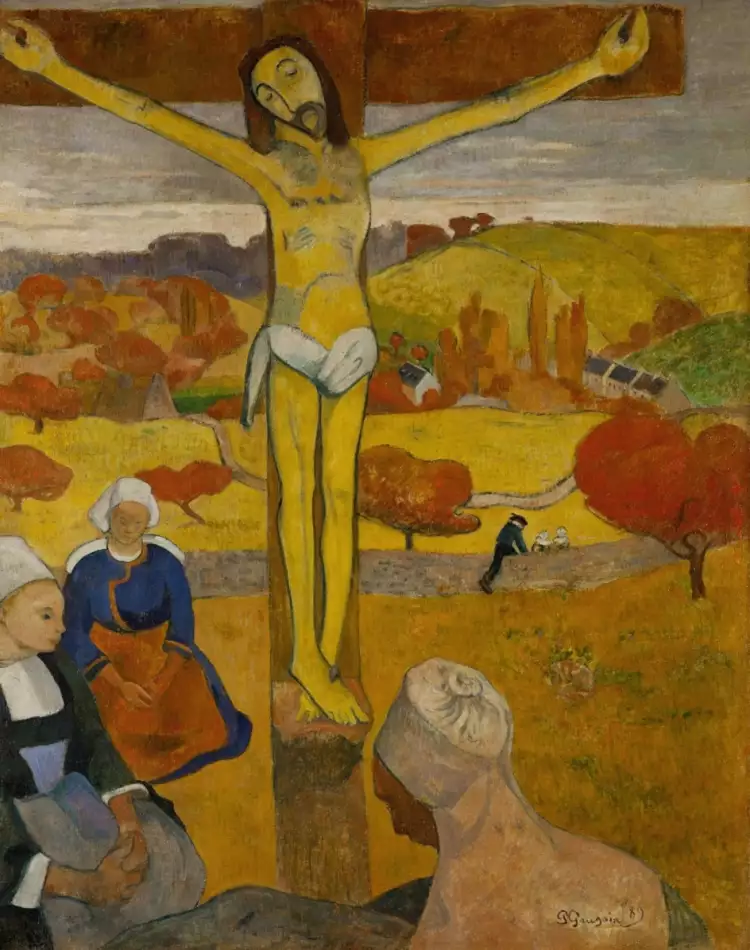 Symbolism. Paul Gauguin. The Yellow Christ, 1889
Symbolism. Paul Gauguin. The Yellow Christ, 1889
Artists of this movement considered symbols to be the only possible tool for expressing their ideas on canvas. They were not hesitant to borrow artistic techniques from both academic art and modernist movements. Among their paintings, one can find works with clear lines and strict composition, as well as pieces with decorative flat contours of figures.
The surge of interest in Symbolism at the turn of the 19th and 20th centuries was observed in many European countries, including England, Belgium, Poland, Russia. Symbolists anticipated Expressionism, and their ideas found reflection in subsequent art movements, gradually merging into Surrealism and Modernism.
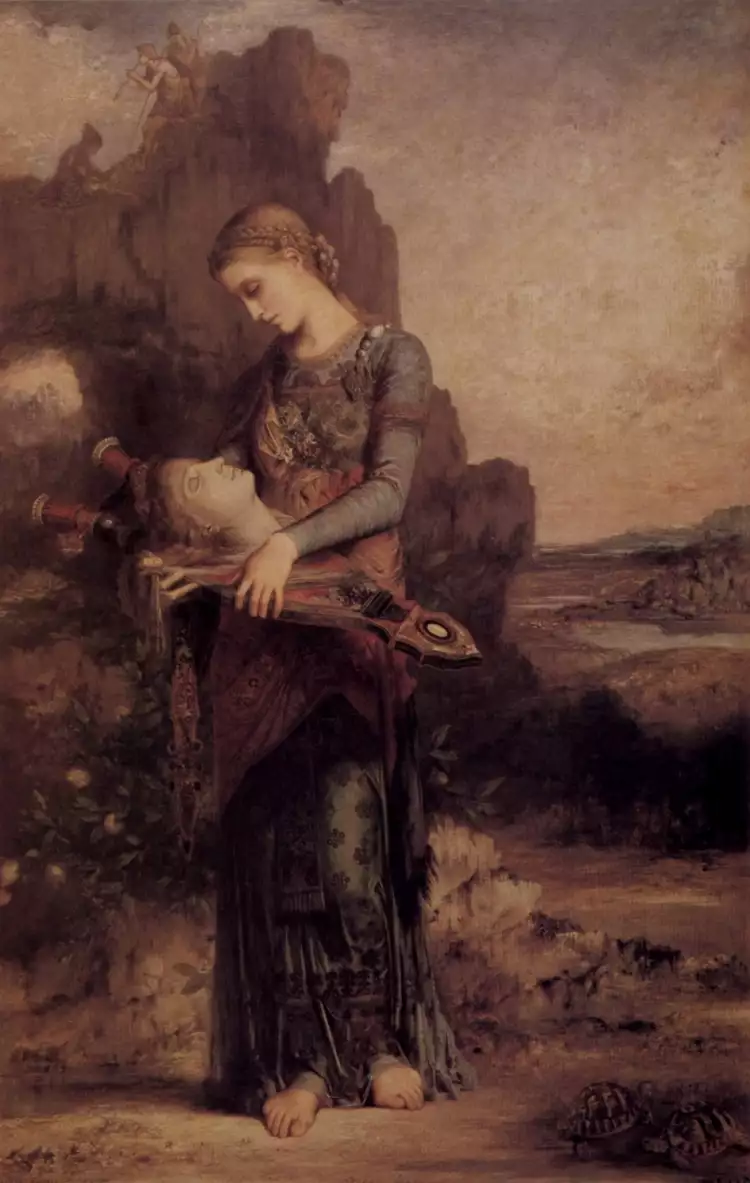 Symbolism. Gustave Moreau. Young Thracian girl carrying the head of Orpheus, 1865
Symbolism. Gustave Moreau. Young Thracian girl carrying the head of Orpheus, 1865
Famous Symbolist Artists
Paintings by Symbolist masters are easily recognizable by the characteristic features of this style of painting. Here is a list of the most well-known Symbolist artists, in our view:
- Gustave Moreau (1826-1898) – a prominent representative of the movement, although the master himself did not consider himself a Symbolist.
- Pierre Cécile Puvis de Chavannes (1824-1898) – had a significant influence on the development of the Art Nouveau style.
- George Frederic Watts (1817-1904) – a British artist and sculptor known for monumental allegorical paintings.
- Fernand Khnopff (1858-1921) – the most famous Belgian Symbolist, recognized as a master of mystical fantasies.
- Mikhail Vrubel (1856-1910) – an outstanding Russian painter with a complex life and rich artistic legacy.
Symbolism emerged brightly at the turn of the 19th and 20th centuries in global culture and left a noticeable mark in its history. Remarkable works by Symbolists and masters of other styles are always presented at auctions on the Very Important Lot platform. On our website, you can also buy paintings by contemporary artists without intermediaries.
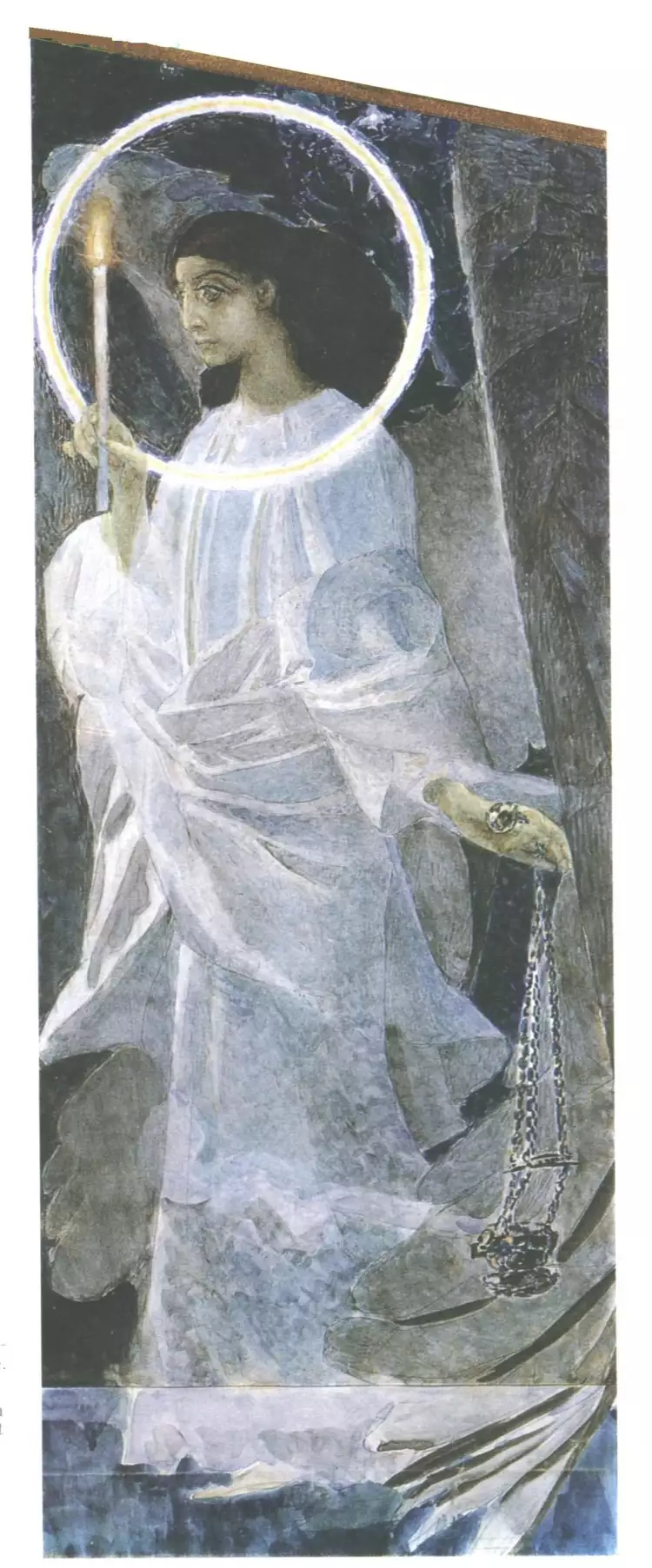
 The painting "Bay of Naples" by Ivan Konstantinovich Aivazovsky is an invitation to immerse yourself in the serene beauty of a southern evening
The painting "Bay of Naples" by Ivan Konstantinovich Aivazovsky is an invitation to immerse yourself in the serene beauty of a southern evening  Romanticism: Wings of Freedom and Inspiration
Romanticism: Wings of Freedom and Inspiration  Sculpture is the unique art of creating three-dimensional artistic works
Sculpture is the unique art of creating three-dimensional artistic works  Interior design refers to the internal space of rooms: styles of decoration, classification, and characteristics
Interior design refers to the internal space of rooms: styles of decoration, classification, and characteristics  Battle genre in painting: heroic battles and anti-war pathos
Battle genre in painting: heroic battles and anti-war pathos  Orders of France - from the Middle Ages to the present day
Orders of France - from the Middle Ages to the present day 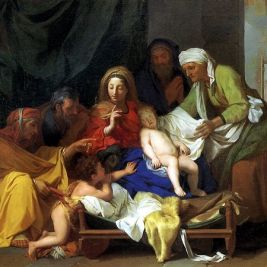 Classicism: strict ideals of high style - characteristics, history, iconic classicists
Classicism: strict ideals of high style - characteristics, history, iconic classicists  Acrylic is a painting technique and a type of artistic paint: essence, history, advantages, application
Acrylic is a painting technique and a type of artistic paint: essence, history, advantages, application 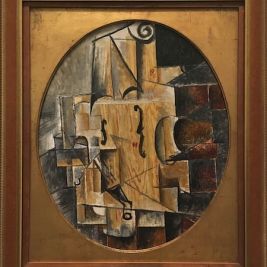 The painting "The Violin" by Pablo Picasso is a picturesque masterpiece about music
The painting "The Violin" by Pablo Picasso is a picturesque masterpiece about music 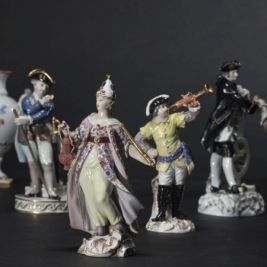 Online auction at HERMANN HISTORICA 8-13 July 2024: Kunst, Antiquitäten & Antiken
Online auction at HERMANN HISTORICA 8-13 July 2024: Kunst, Antiquitäten & Antiken